We all know that social media is no stranger to change. It’s constantly evolving, and new updates are always just around the corner. TikTok is no exception. Since the platform’s launch in 2012 (or should we say Musical.ly?), it’s undergone major changes. TikTok officially became the platform we know and love in 2018, and with its growth came an expansion in video length. From its humble beginnings of 7-second clips, it rapidly escalated to 15 seconds, then 3 minutes, and now, a lengthy 10 minutes. Keeping up with these changes can feel like chasing a moving target.
To further add to the confusion, industry experts all have conflicting opinions. Later (February 2023) recommends aiming for a snappy 15–30-second clip, while Buffer (February 2023) suggests 11–17 seconds. Planoly (December 2022) throws another spanner in the works and reports that longer videos can produce more views and engagement.
Now the burning question on everyone’s mind is, “How are we supposed to know what video length will perform best?” We figured the only way to solve this is to put it to the test ourselves! Keep reading to help us uncover whether or not video length has any impact on TikTok’s performance.
Here was our plan…
After some research, we asked, “Does the length of a TikTok affect its performance?” The aim was to make the test as controlled as possible, so limited variables prevented us from drawing an accurate conclusion. To overcome this, we posted a TikTok on the same day each week, with the same hashtags and trialled two different posting times.
We tested four TikToks on one of our client’s TikTok pages, Biz Care Apparel, over four weeks. Two were over 15 seconds long, and two were under 15 seconds long.
We put the following structure to the test:
1A: Work Bestie Day Off (15 sec) – posted at 9 a.m.
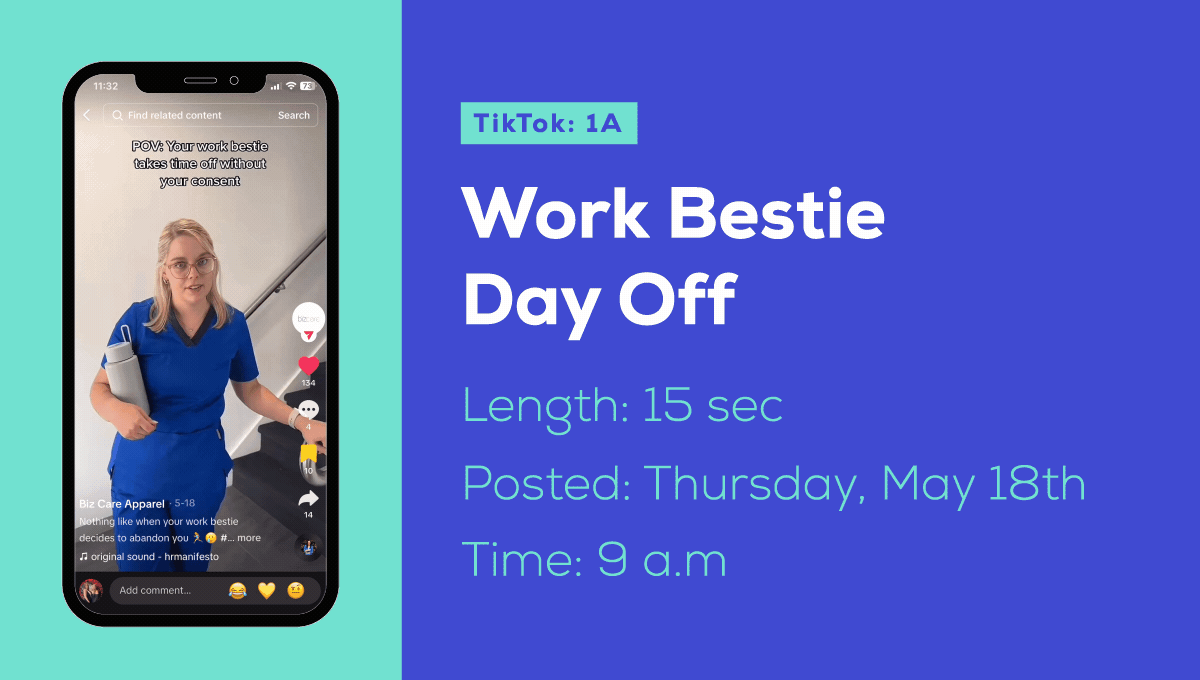
2A: Age Difference (5 sec) – posted at 9 a.m.
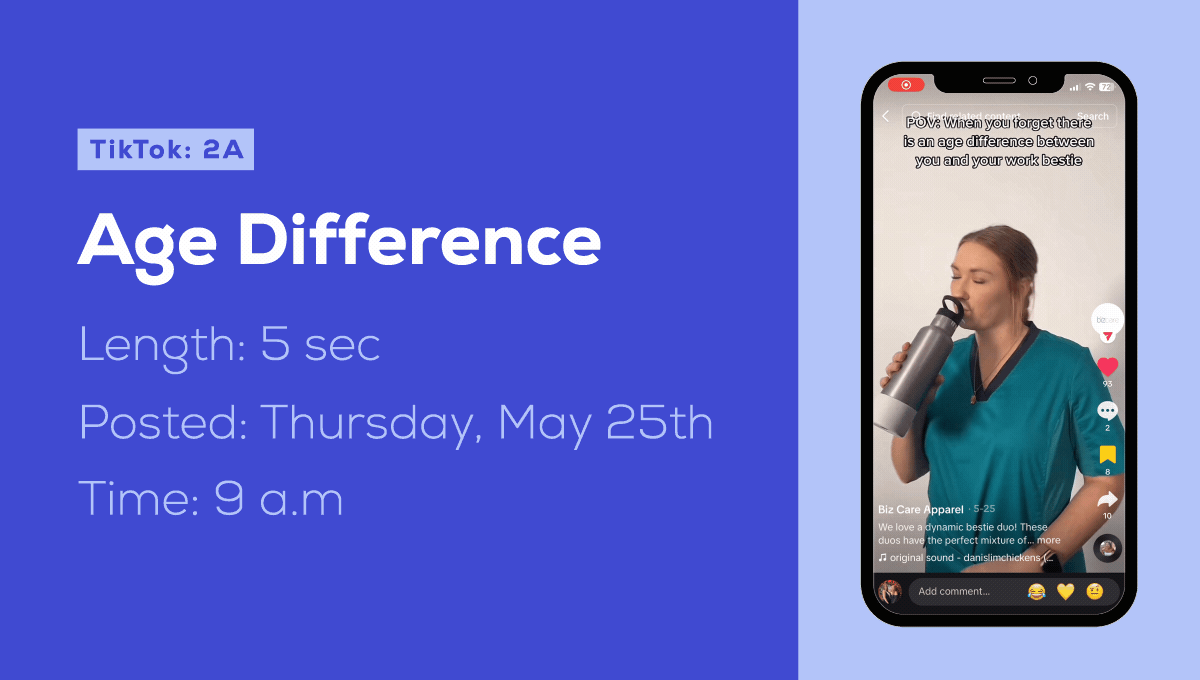
1B: Mac Dance (19 sec) – posted at 12 p.m.
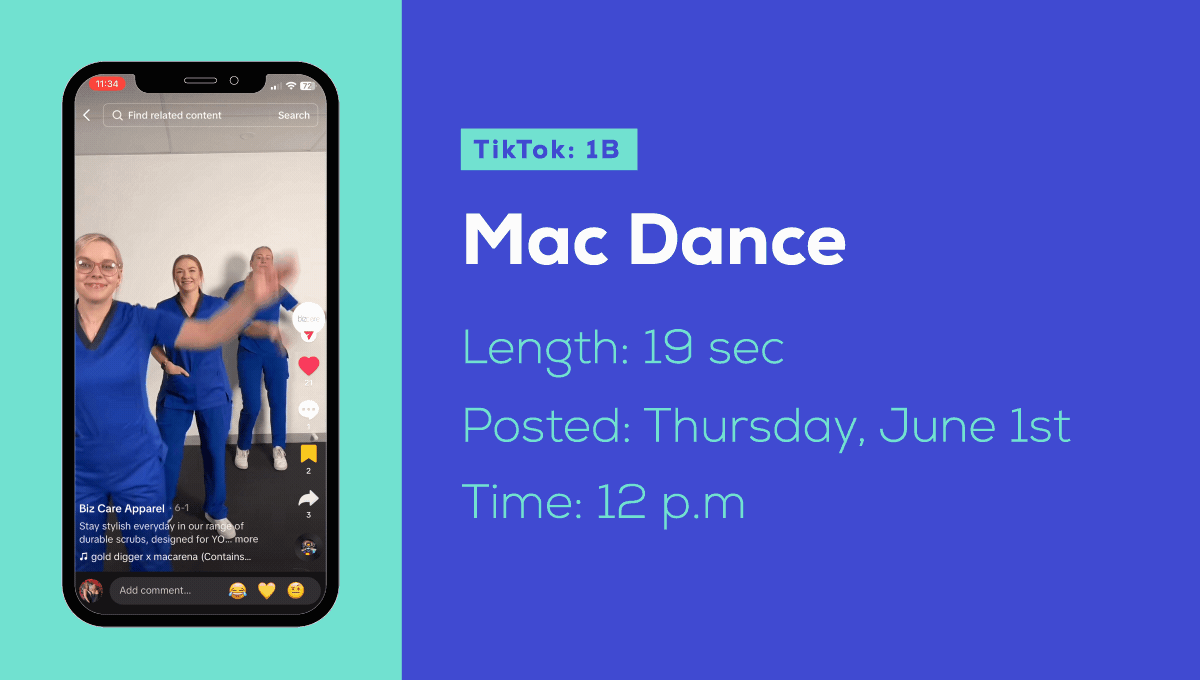
2B: Obsessed with Pink (6 sec) – posted at 12 p.m.
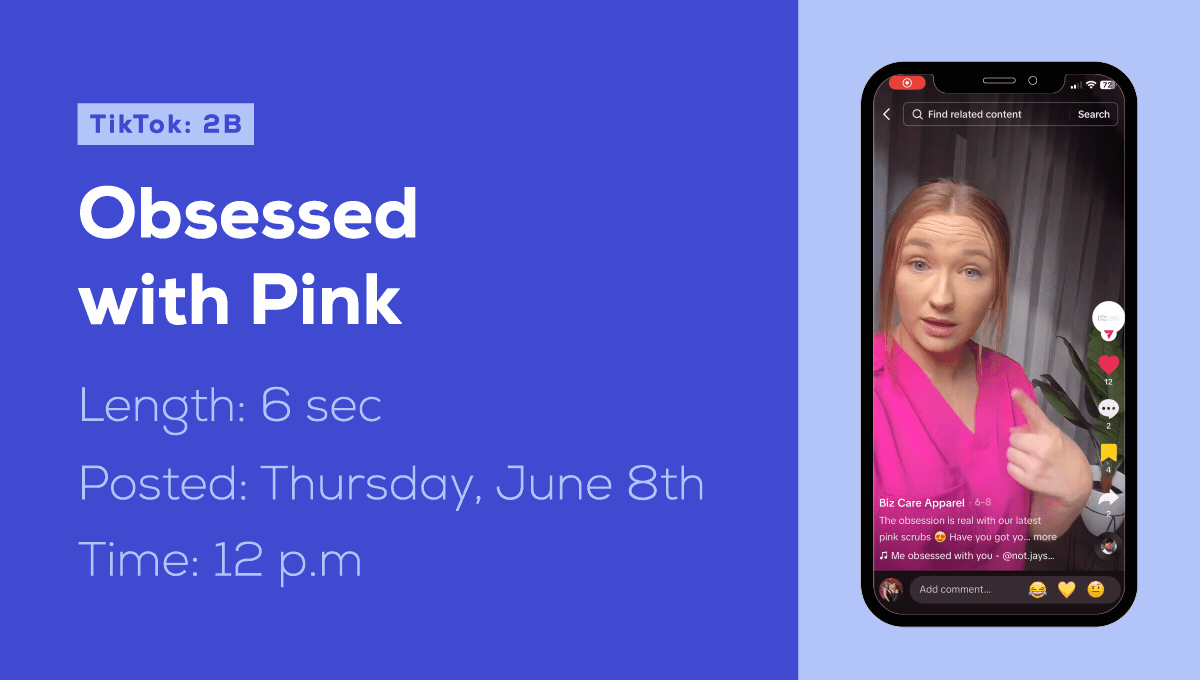
Based on our previous testing (click here to find out what happened when we put trending audio to the test), we realised it would be important to monitor the results periodically. We made sure to record the views, likes, comments, shares, saves, view time average, completion rate and reach from each TikTok after one hour, 24 hours, five days, seven days, and 14 days.
After each TikTok had been up for an equal amount of time, we were able to gather the results and conclude whether or not the length of TikTok videos affected performance.
The main comparison will be between 1A vs. 2A and 1B vs. 2B; however, we can also analyse the results as a whole.
So, what were the results?
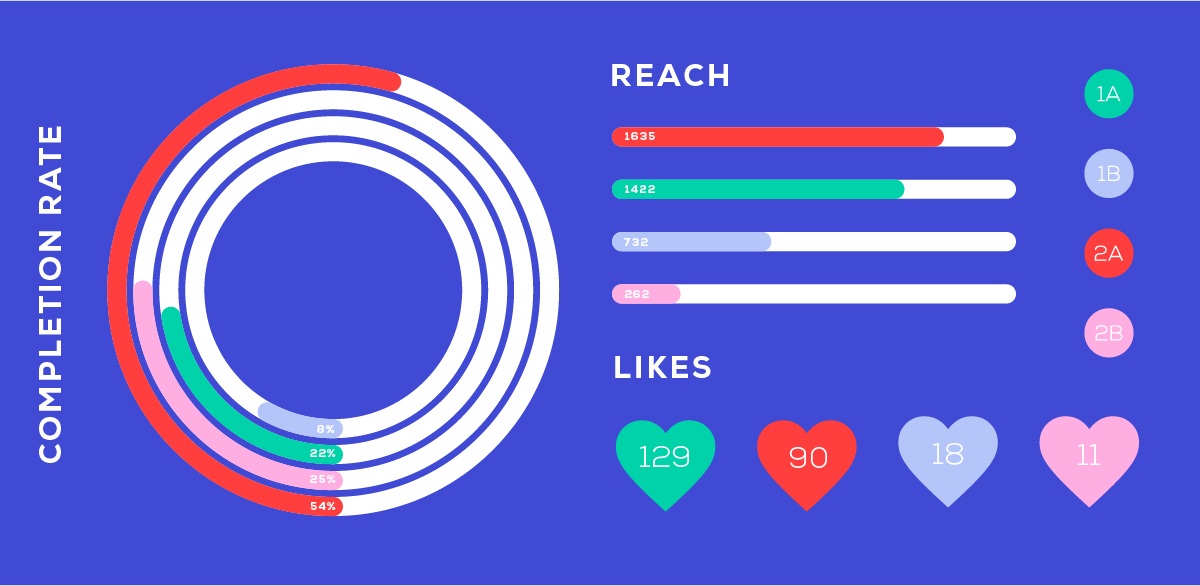
After posting a series of four videos on Biz Care’s TikTok, it was found that the length of a TikTok did affect the overall completion rate.
This was demonstrated in TikTok 2A and 2B, which were the shorter videos, and both received a completion rate of 54.19% and 25.2%, respectively. In comparison, TikTok 1A and 1B received 22.66% and 8.2%, respectively. Due to the shorter nature of these videos, they were able to hold the viewer’s attention for longer.
According to Kris Boger (2020), the Head of Product Marketing at TikTok in Europe, Gen Z has an attention span of around 8 seconds, slightly shorter than millennials’ 12 seconds.
Posting at different times was to reduce variables, but we were also able to discover that 9 a.m. was a significantly more impressive time to post than 12 p.m. and produced much stronger results in terms of views, likes, shares, saves, and reach.
Comparing the two videos at 9 a.m., the 6-second one (2A) performed better than the 15-second one (1A), with 260 more views and 213 more reach. The completion rate was also 54.19%, compared to 22.66%.
Another thing to note about the TikTok posts at 12 p.m. is that both of their average watched time increased as the days went on, whereas the 9 a.m. posts slowly declined across the two weeks.
Here’s what we think
In conclusion, we can see that shorter videos respond better to our tested audience and, based on research, allow people to engage with the full video. Still, they don’t have much of an impact on viewership or algorithms. The time we posted these TikTok’s had the greatest impact on views and engagement, whereas the length of the video impacted how long the viewer watched. Whether or not this strategy works for you will depend on your TikTok objectives.
A higher view time average and completion rate can help you build a dedicated audience and a positive reputation on TikTok. It can potentially generate leads and drive traffic to your content or business. When viewers watch your TikTok videos from start to finish, it signals to the algorithm that your content is engaging and interesting. As a result, TikTok may promote your videos to a wider audience, increasing the likelihood of attracting more followers and potential customers.
Incorporating a variety of video lengths is an effective strategy for maintaining relevance on TikTok, which will benefit all businesses and creators on the platform.
Overall, it’s crucial to understand that social media does not have a universal solution. Therefore, it is vital to continuously explore and evaluate data to identify the most effective strategies for engaging your specific audience and expanding your social media influence. Testing different outcomes on social media allows us to use these valuable insights and continue to adapt to the fast-paced world in which we work (because who can keep up with these algorithms?).
What do you think we should put to the test next? Send us a DM on Instagram and let us know, or follow us to stay up to date with our next experiment.

